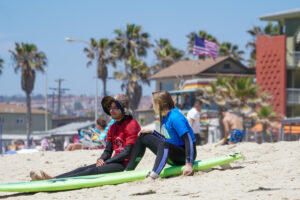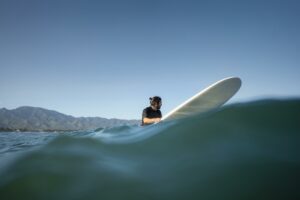Riding perfect waves is a fantastic experience. But for moments in the water to be unforgettable it is important to learn how to surf.
More than just choosing an ideal board or a good beach spot, if you want to practice surfing in the sea, it is essential that you also know how to swim. But, if your goal is to surf in wave pools, just don’t be afraid to be submerged.
And, of course, if you want to become a professional surfer, or learn enough to have fun on your travels and free time, you need a lot of focus and determination.
To give you an initial help, we will talk about five perfect tips for those who want to learn to surf and ride waves. Check out!
#1 Choose a surf school
The most practical and safe way to venture into surfing is to find a school with specialized certified professionals. Cease all your doubts about the sport and get as many tips as possible before falling into the waters.
You don’t ever go into the sea alone during classes. Therefore, take the opportunity to observe your instructor and the other surfers while becoming familiar with the sea and exploring its balance points.
If you have surfer friends, it is also worth talking to them to get more tips to make the moments in the water more fun.
#2 Choose a type of board
If you are researching how to learn to surf for sure, learn about the different models and sizes of boards. Not counting the Stand-up Paddle, we can separate as boards in seven types:
Longboard: large board ideal for small waves and beginners. This board can be made in fiberglass or foam. Foam boards are the best option for people just starting;
Funboard: board smaller than a longboard, with excellent stability for maneuvers and ideal for beginner surfers;
Gun: medium board with fine tip and tail, which offers great stability for those who want to catch big waves;
Malibu or “Groveler”: medium board and perfect for maneuvering even small waves. A great choice for novice surfers;
Shortboard: board with a very thin tip and slightly inclined, perfect for maneuvers of more experienced surfers;
Fish: wide board, with a curved tip and dovetail. It is perfect for waves of low strength,
Trailer: small and very narrow board with handles to keep your feet fixed during maneuvers.
A good idea is to experiment with surfboards to find out which one you feel most comfortable going into the sea with. But, while learning how to surf, give priority to longboards and fun board models.
#3 Search for the right beaches to start
The ideal place to start surfing should not be too crowded, the fewer people in the water the better. Another point that you should note is the strength and size of the waves, prefer places with softer and smaller waves.
In addition, it is very important that you get familiarised with the beach before entering with a board, either with the instructor or alone. Dive into the water and find out what the sand under it looks like, whether it is firm or slippery, whether or not there are craters.
#4 Prepare your body
Unlike some sports that you can gain resistance as you train, to become a surfer, it is essential to have a good physical preparation. After all, the strong and resistant musculature, in addition to good resistance, is what will ensure you catch many waves.
Always keep in mind that surfing is a sport that requires effort from the whole body – especially the shoulders, back, and legs. So, if you do some other sport, like swimming and or athletics, it will be easier to learn how to surf.
#5 Have patience!
Among all the tips for surfing, there is no doubt that the most important is this: be patient. Learn to handle your board, to feel the tide, and the strength of the waves.
Make a routine with training and stretching, so that your body adapts more quickly to the techniques of the sport. Do not skip the stages of learning in a hurry to catch waves.
Even if you already know how to surf, if you are on an unknown beach, talk to other surfers and observe the behavior of the sea long enough to give you confidence and security.
Photo by Chris Osmond on Unsplash




